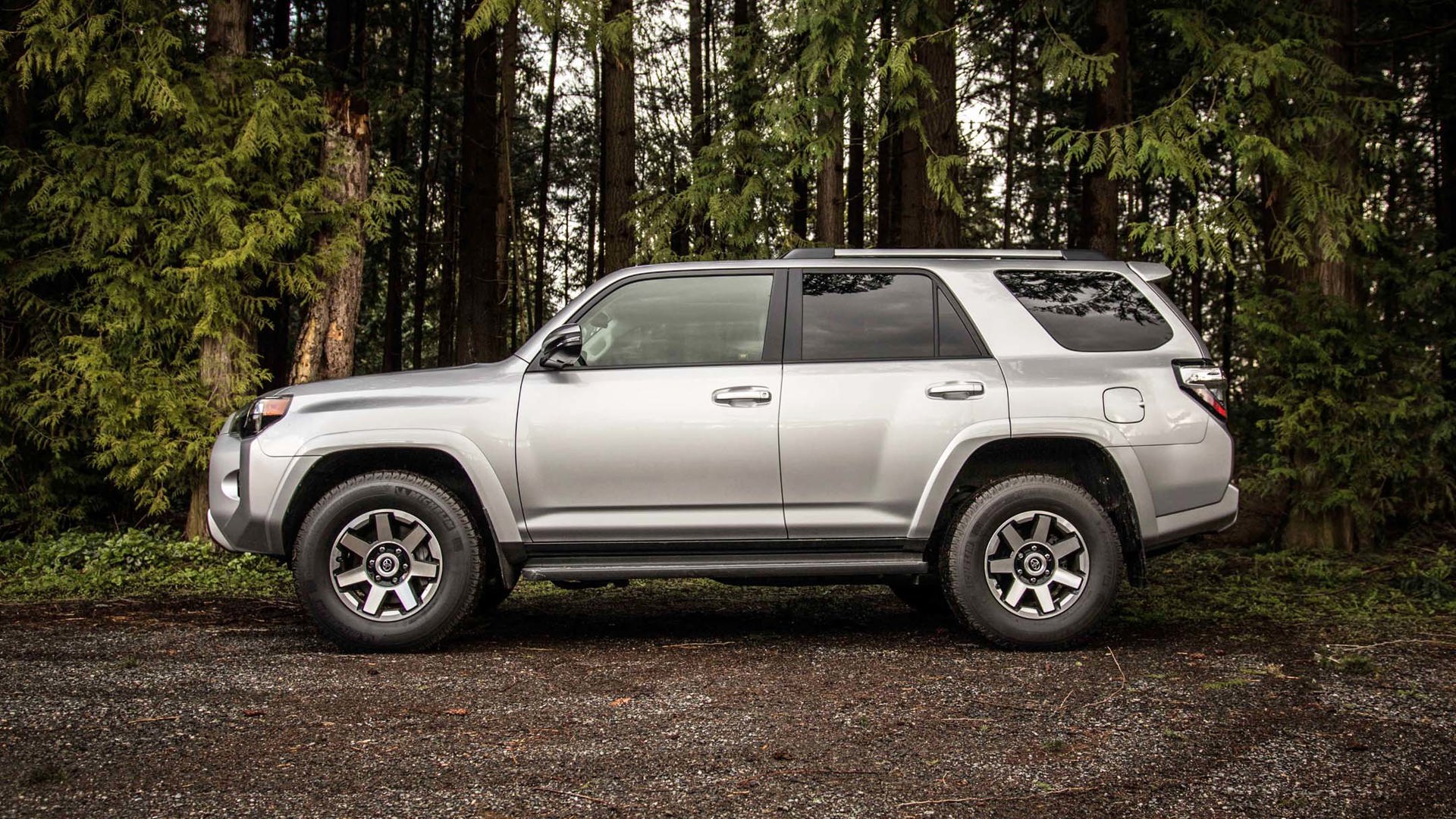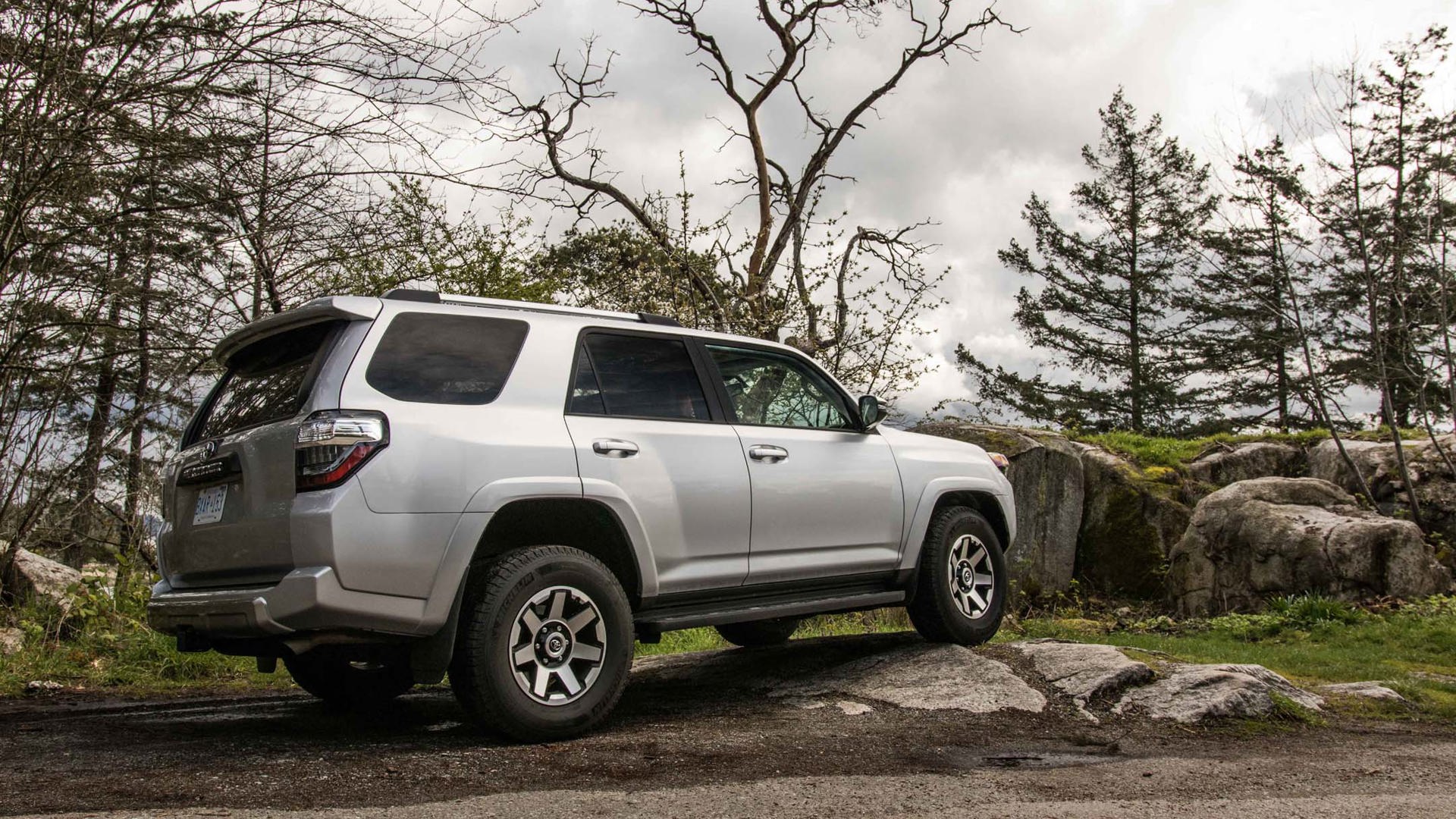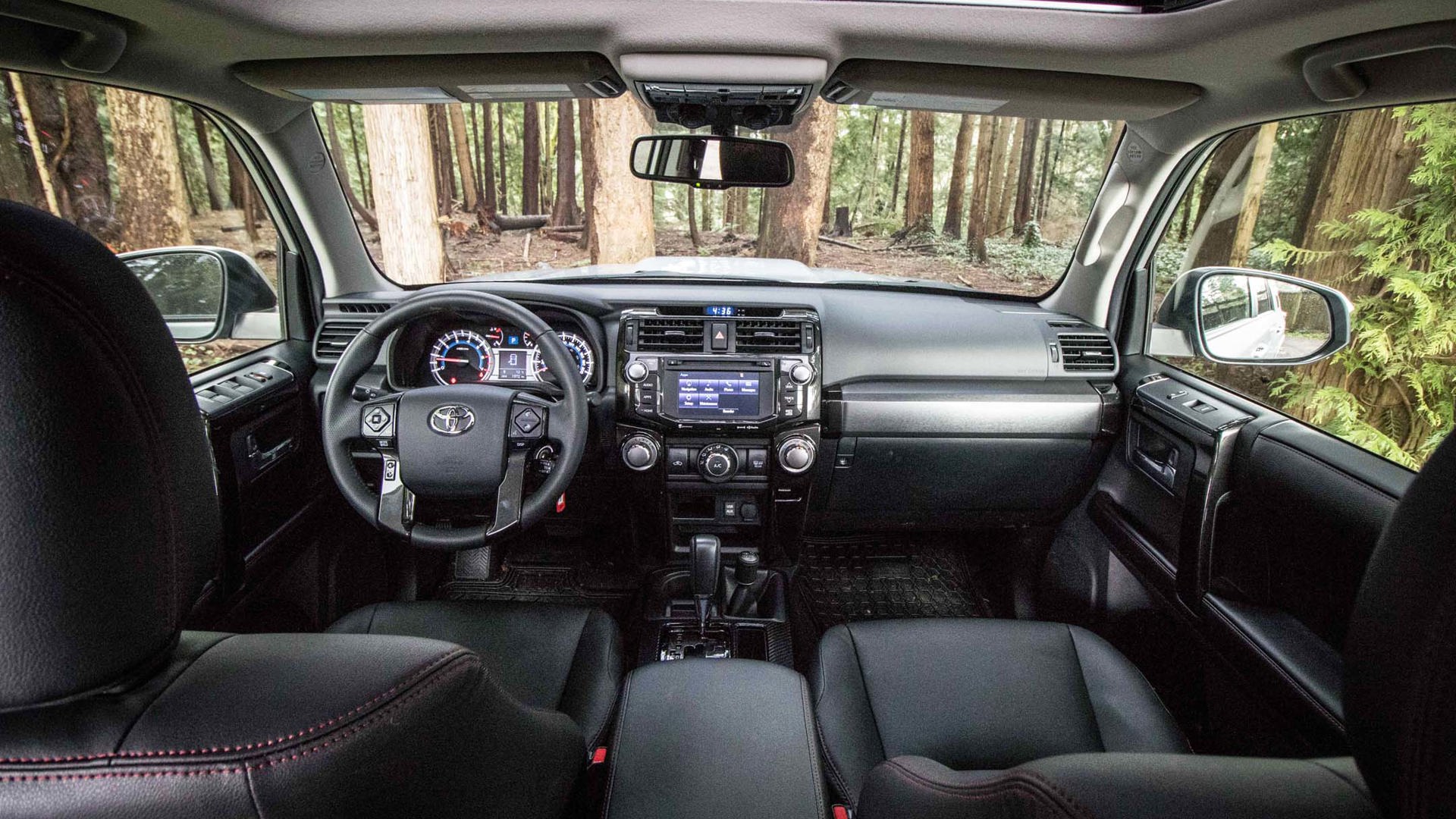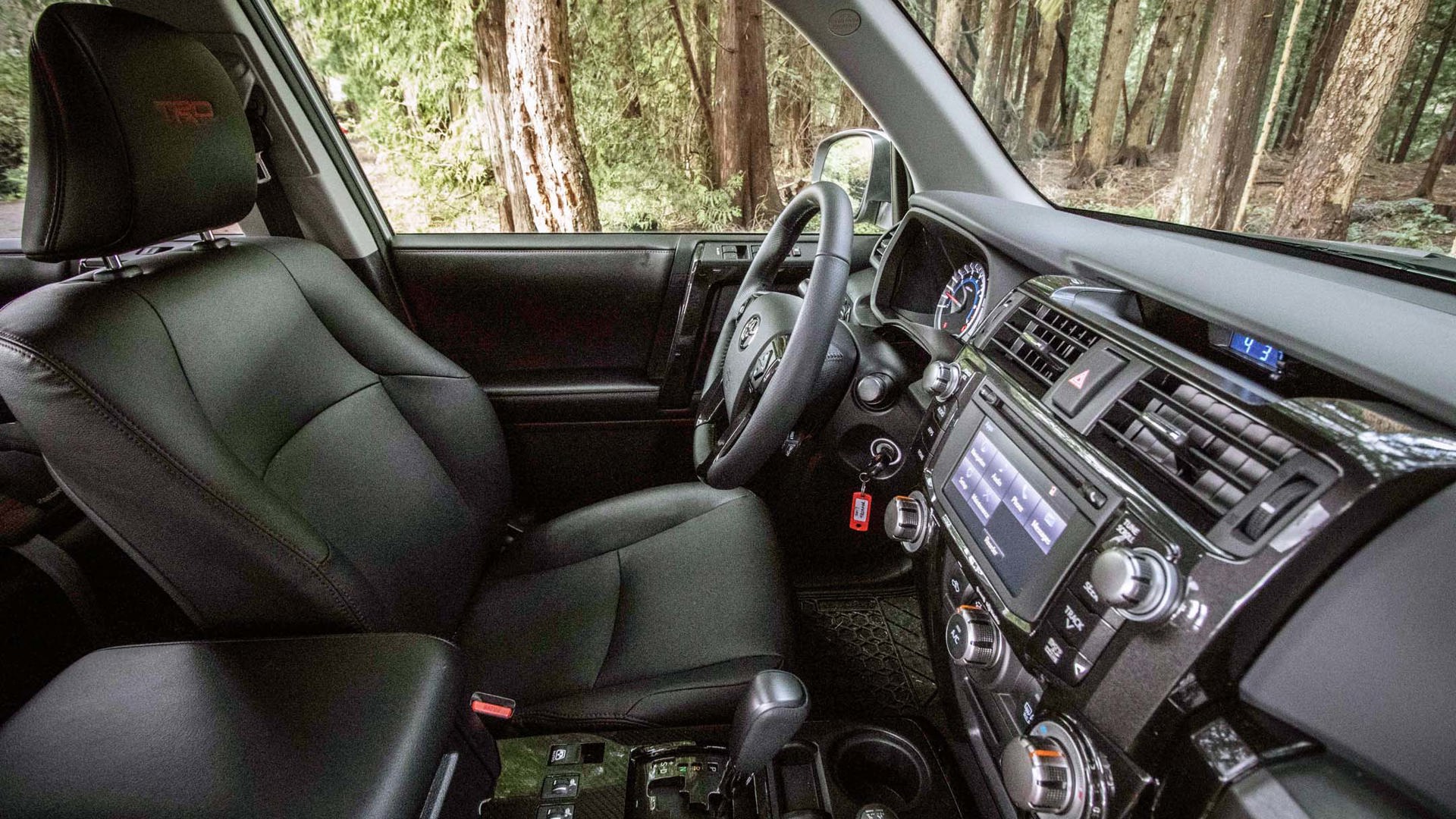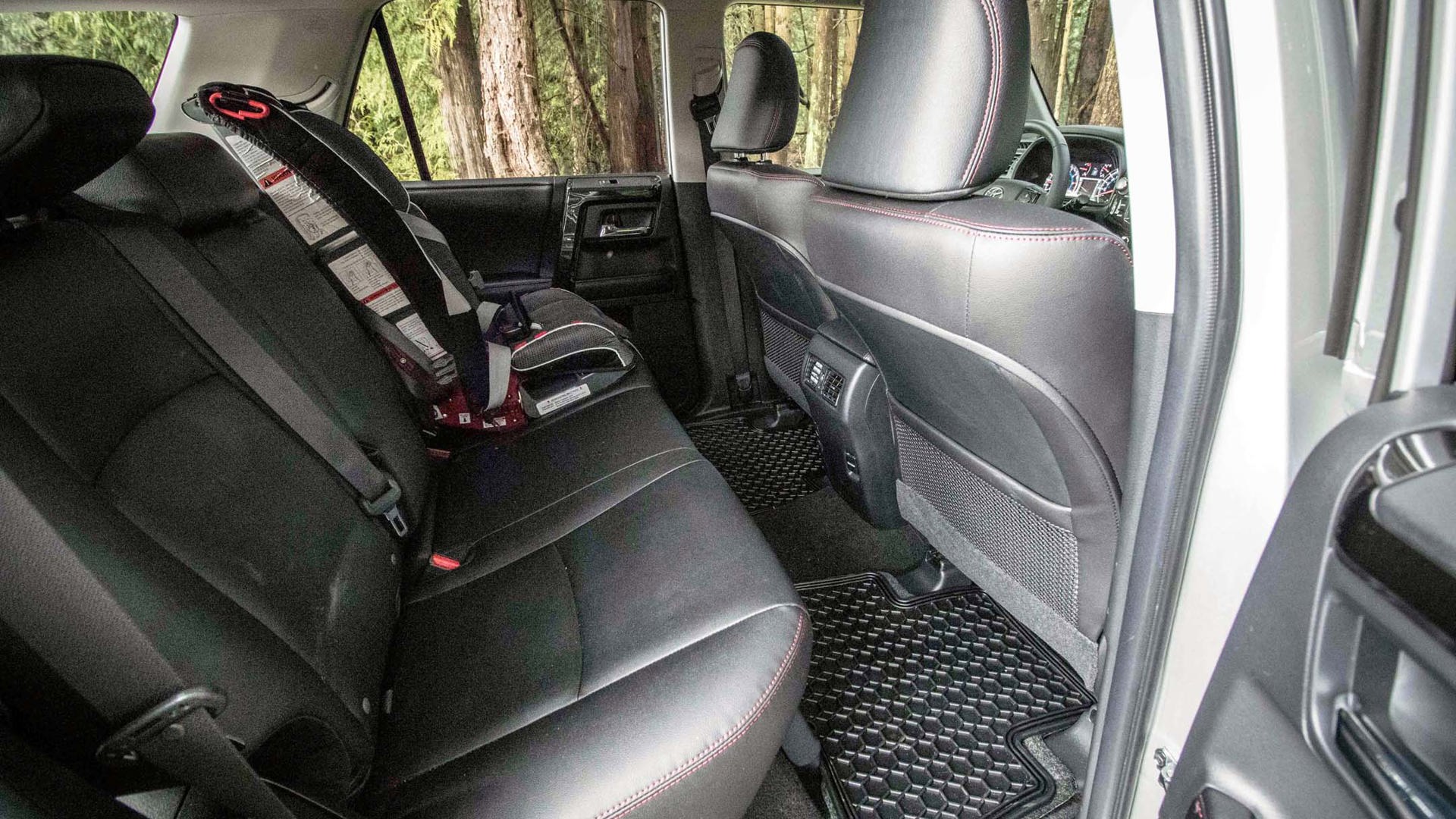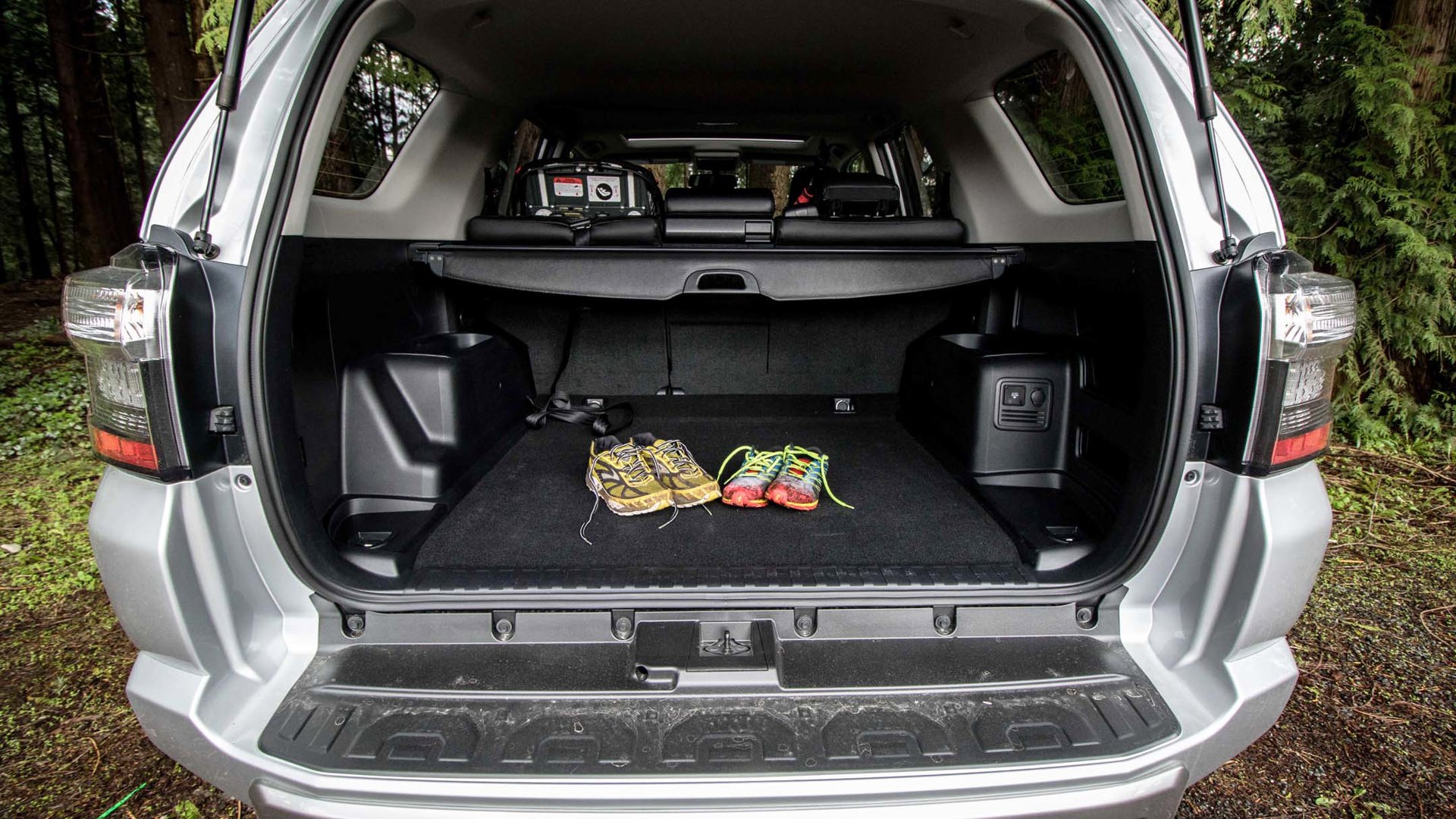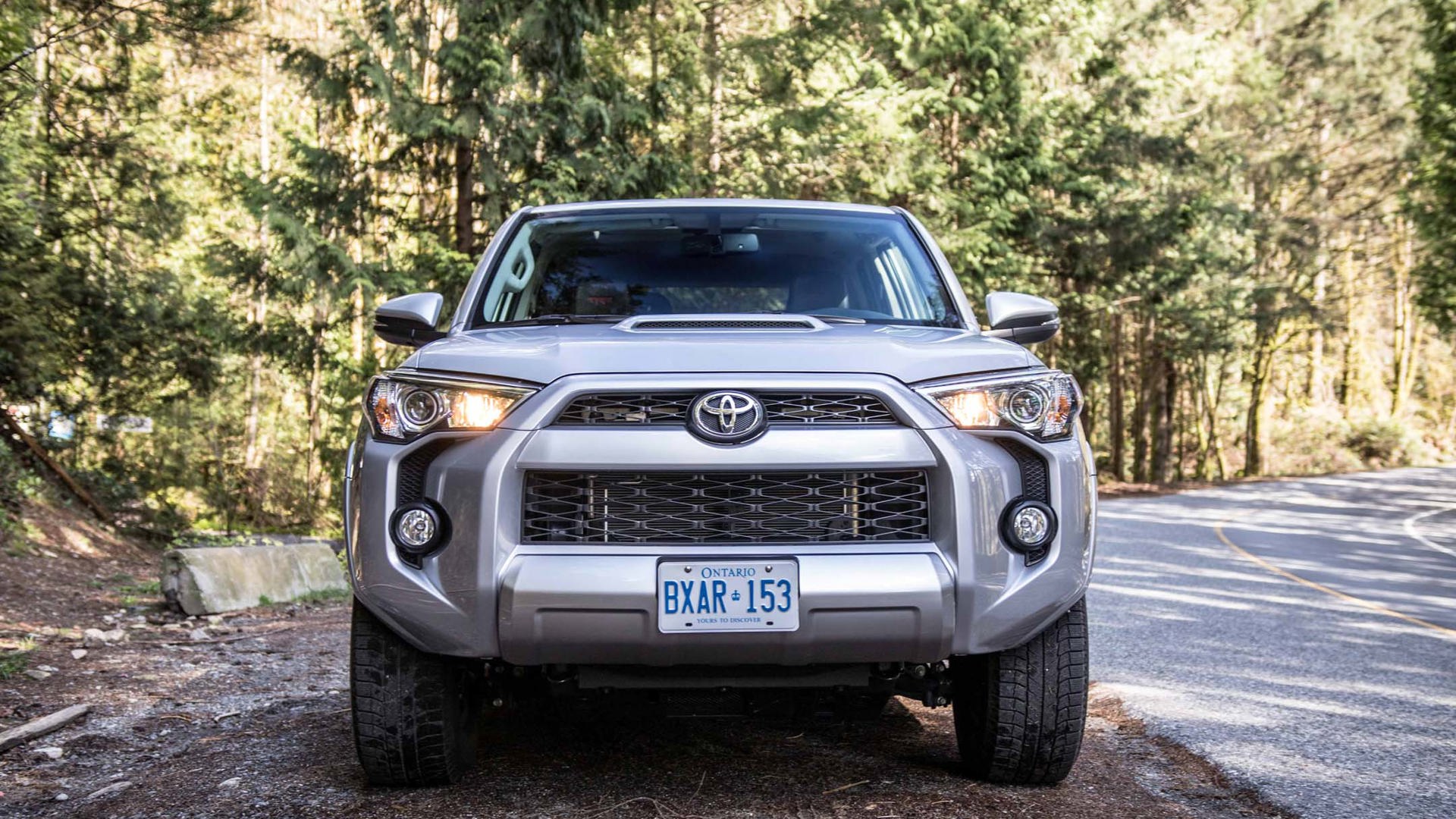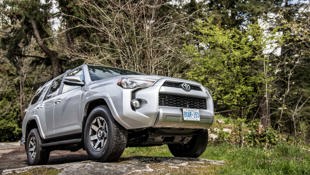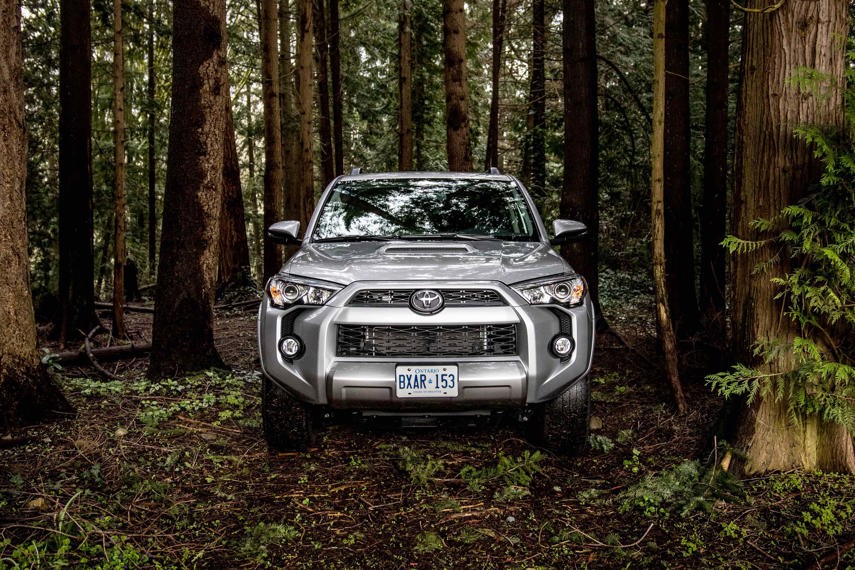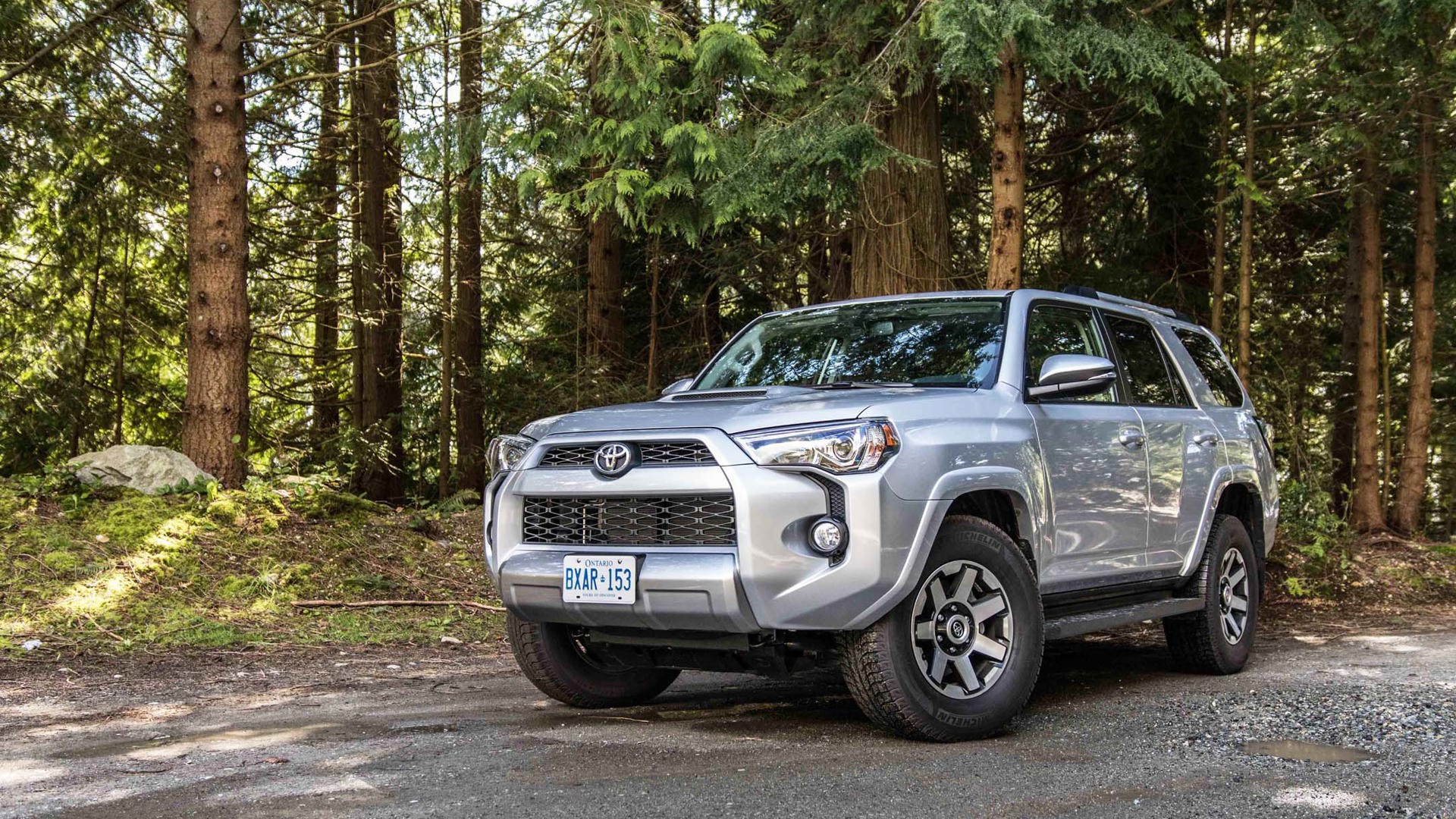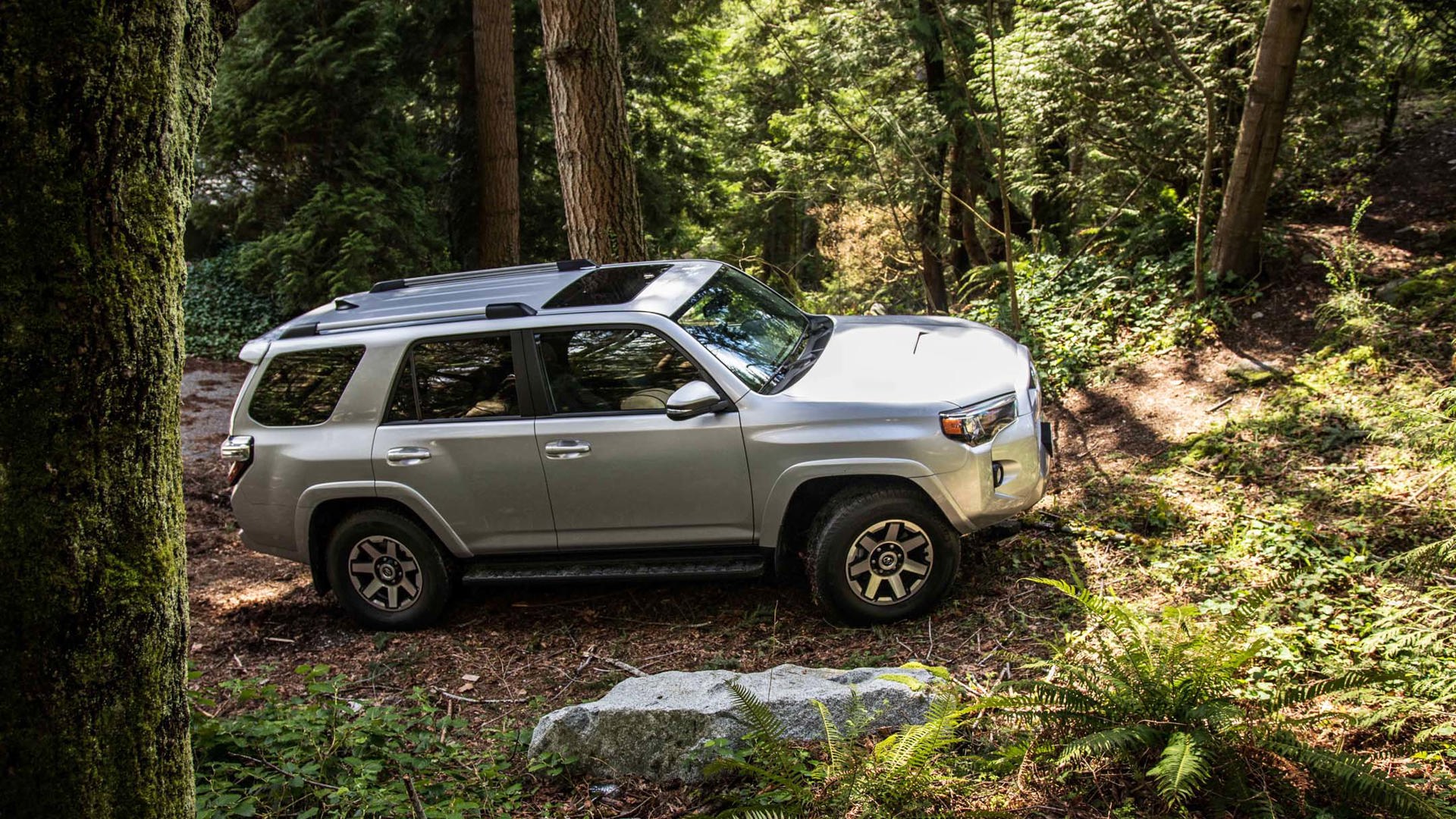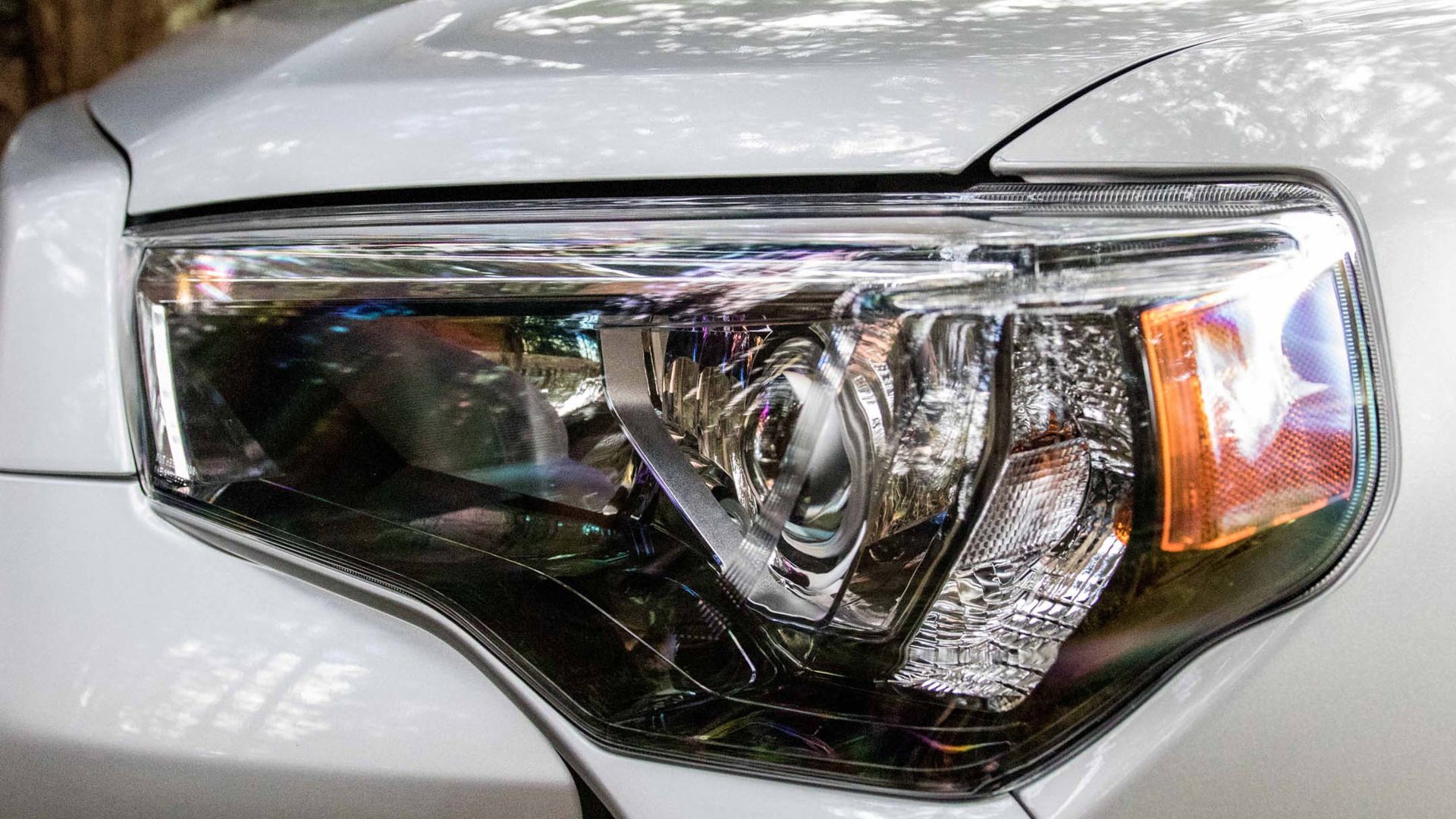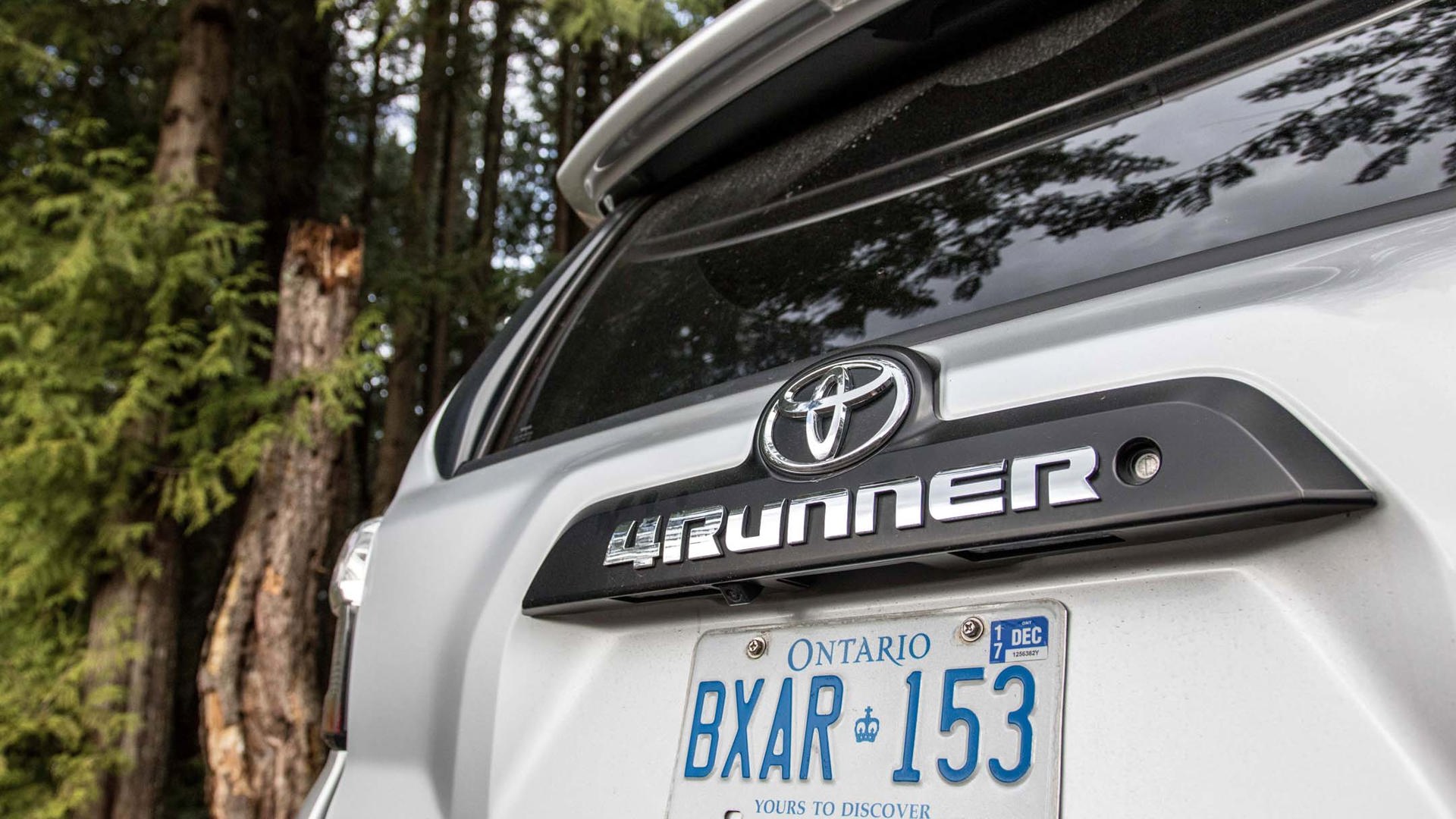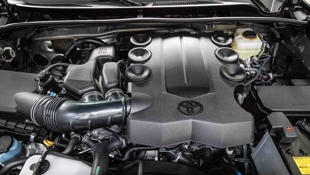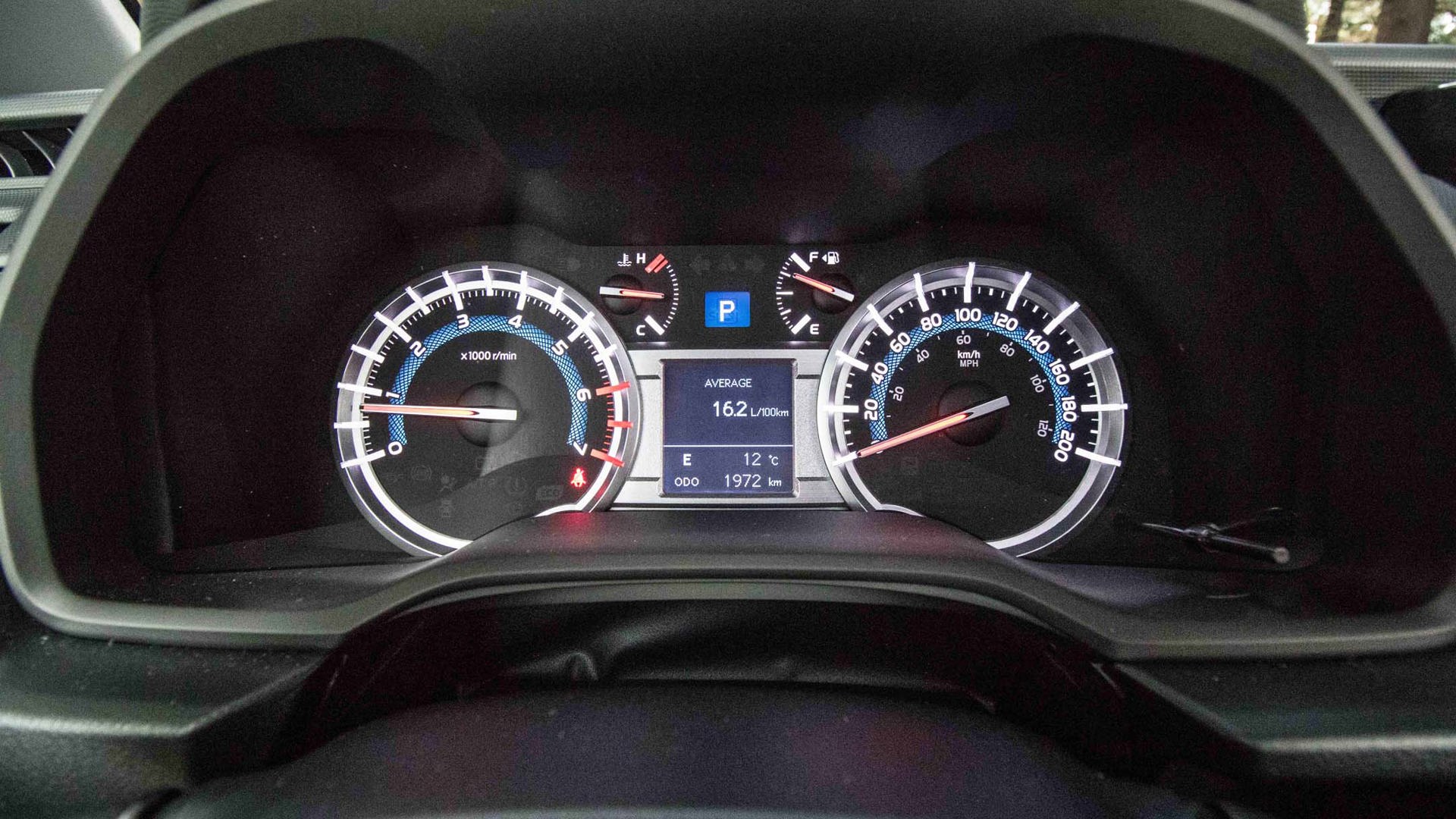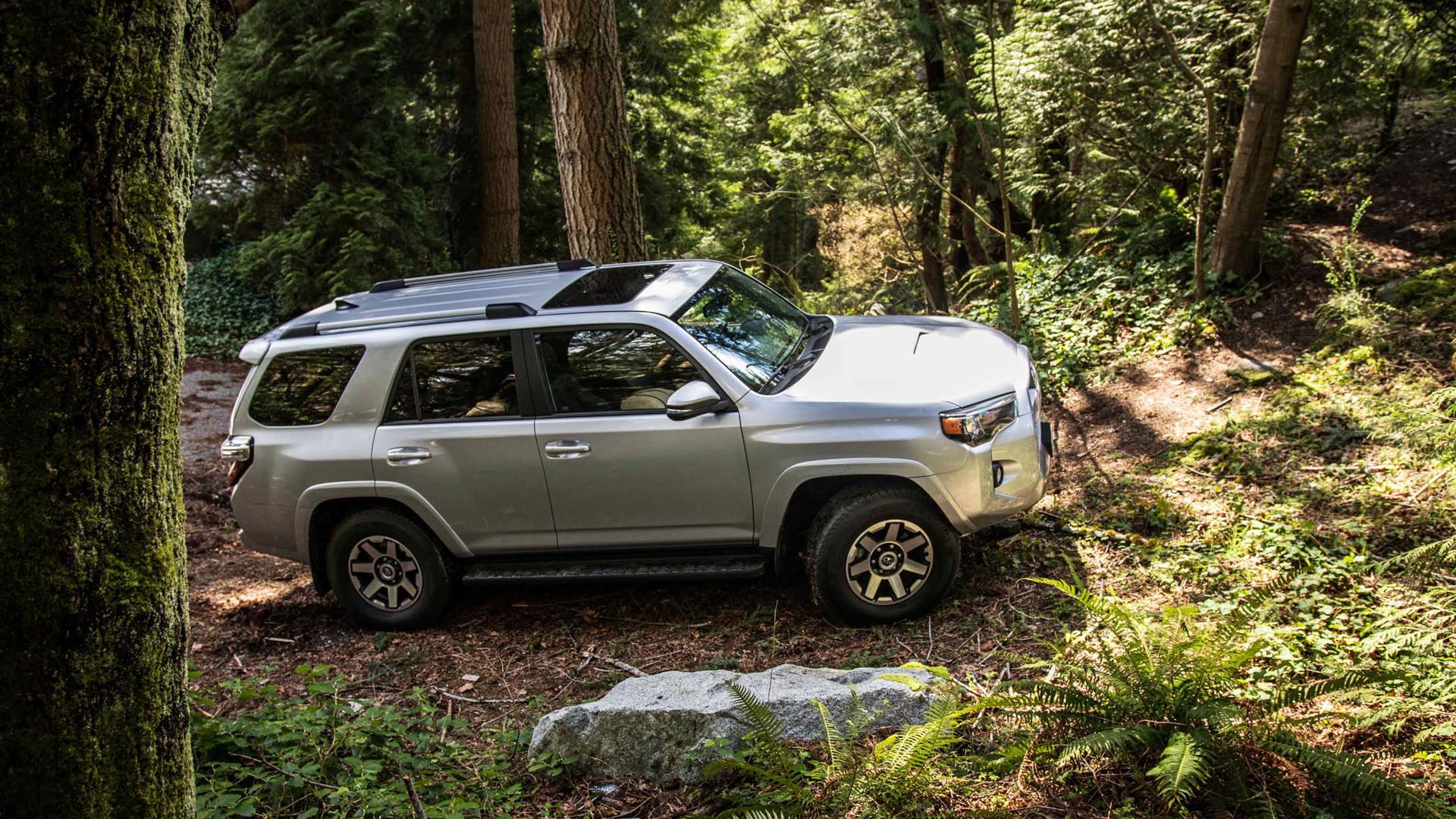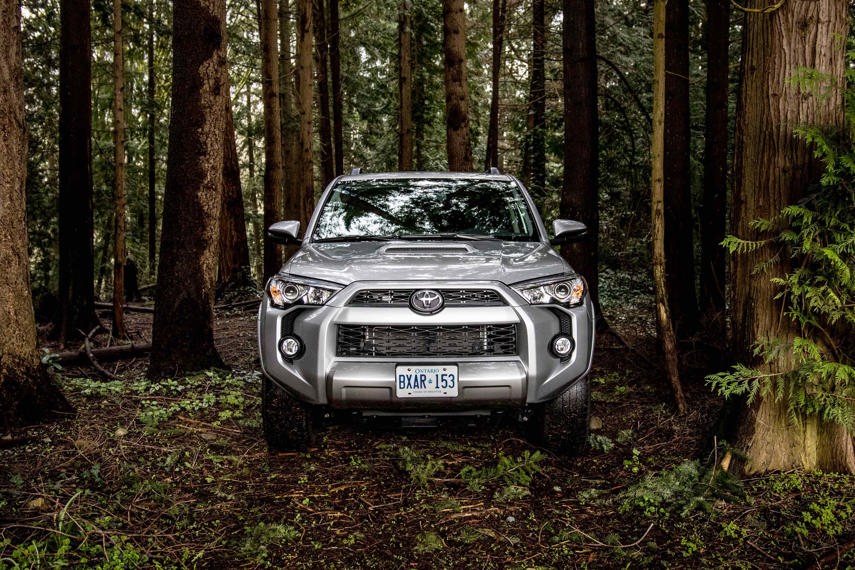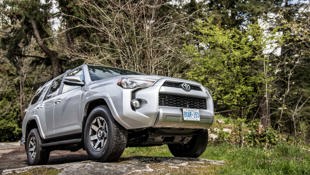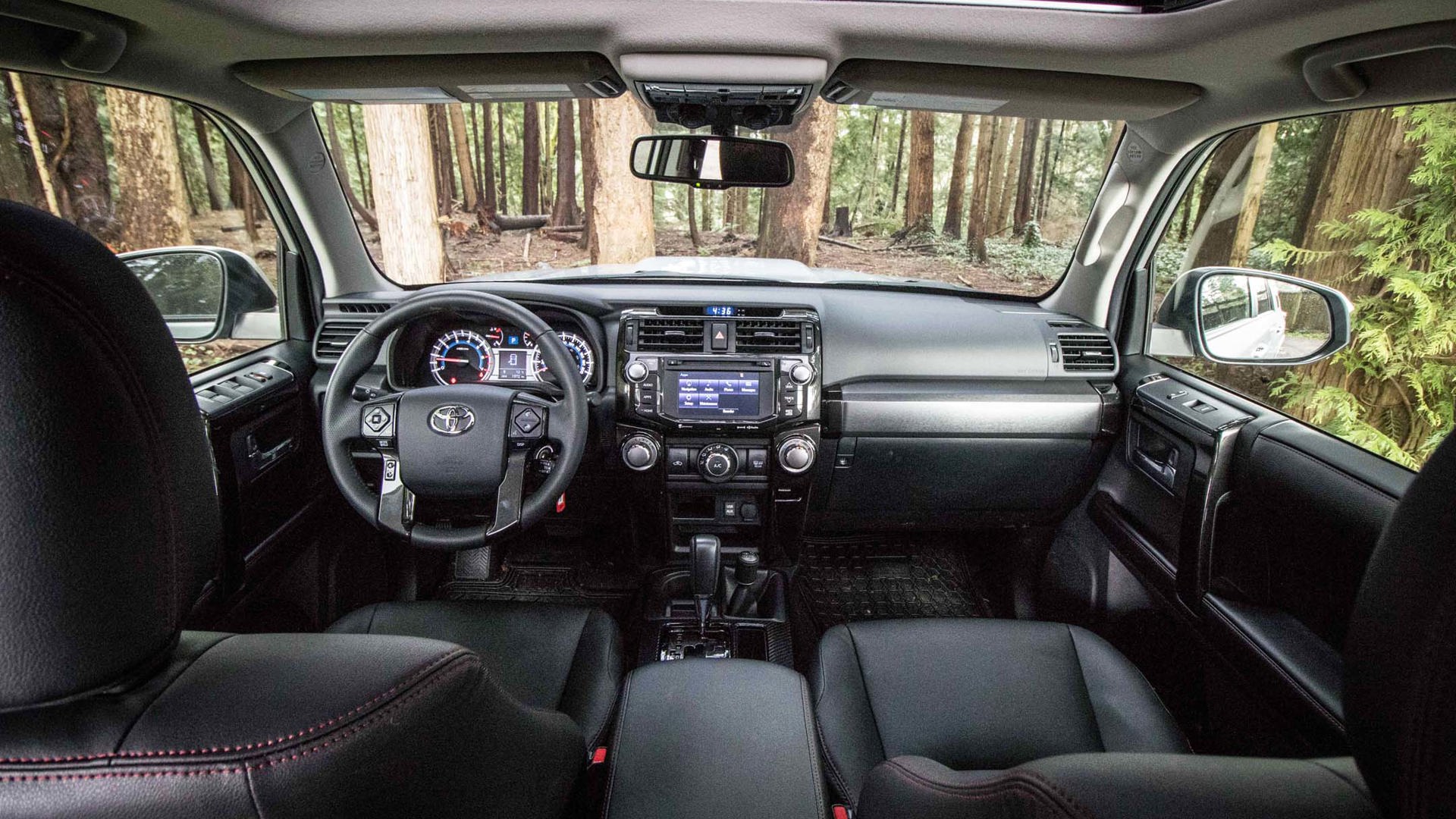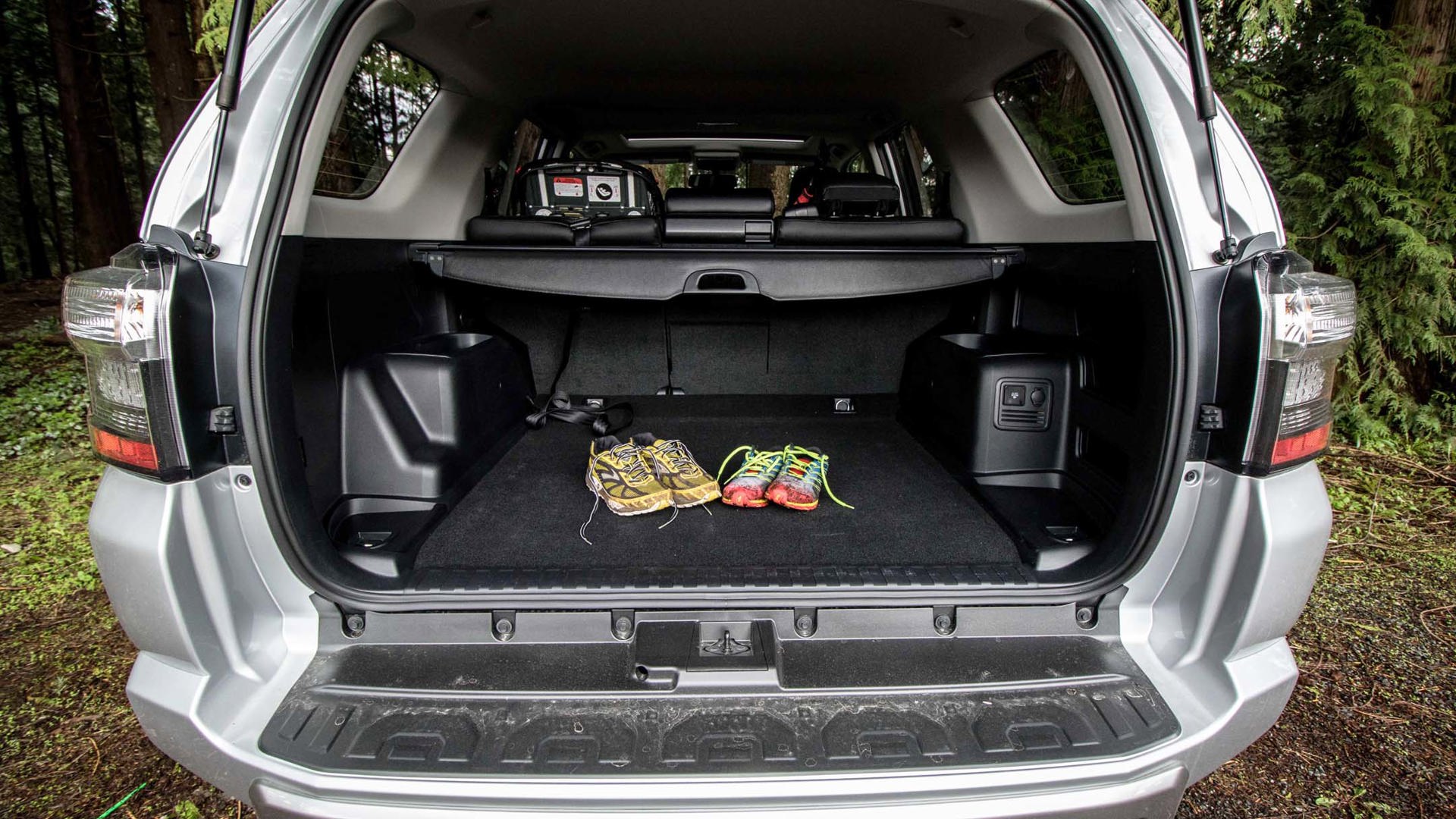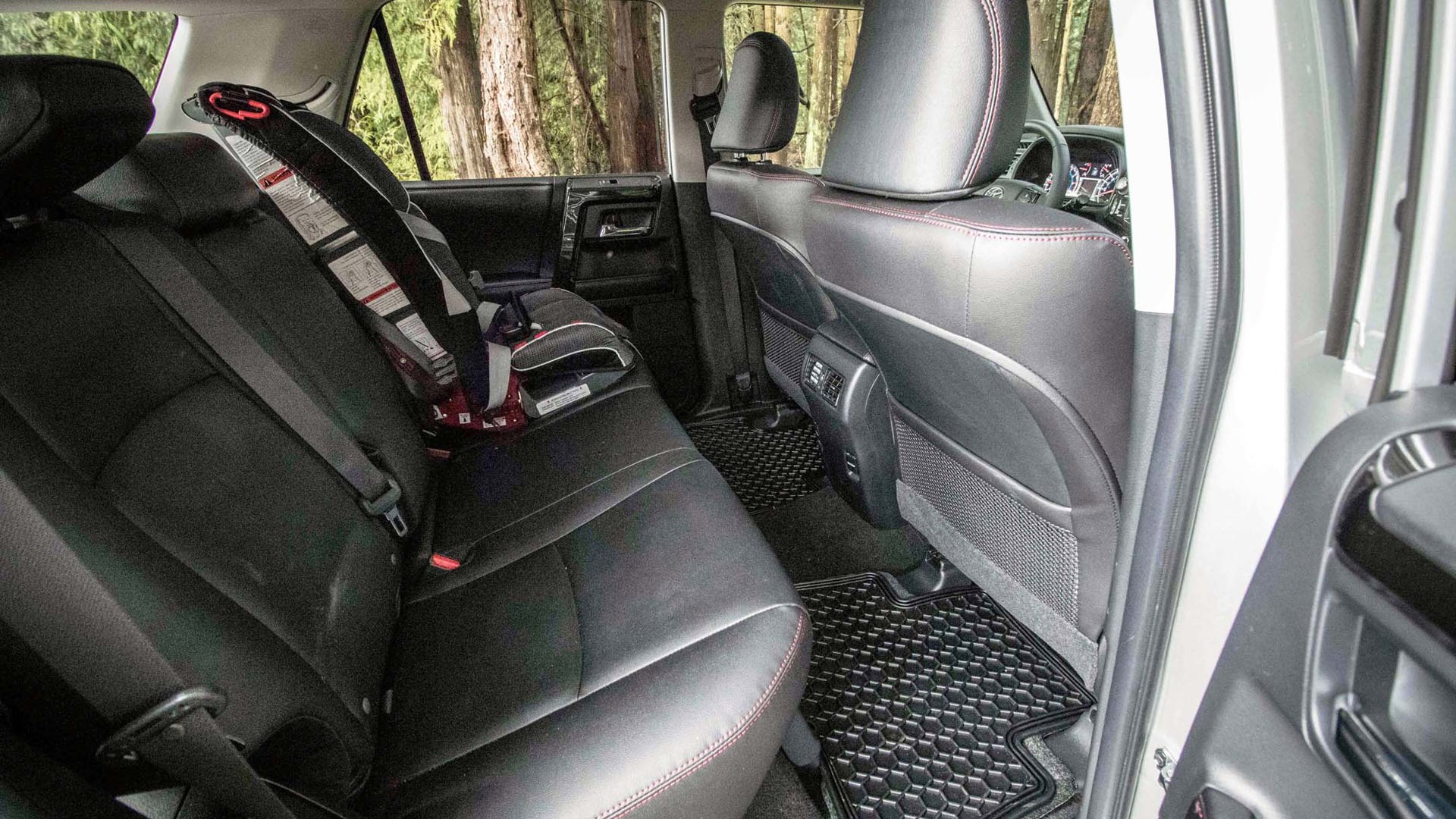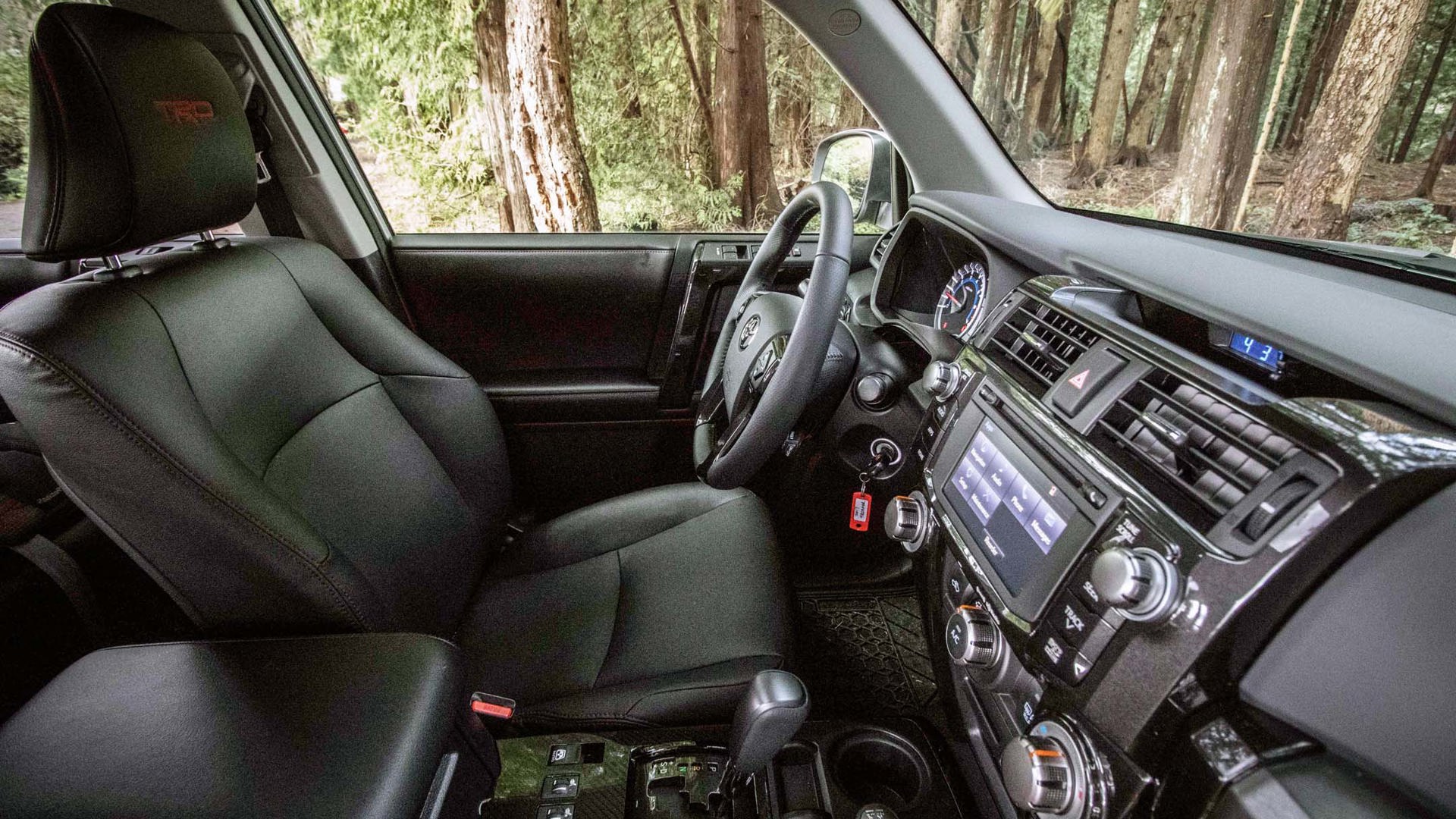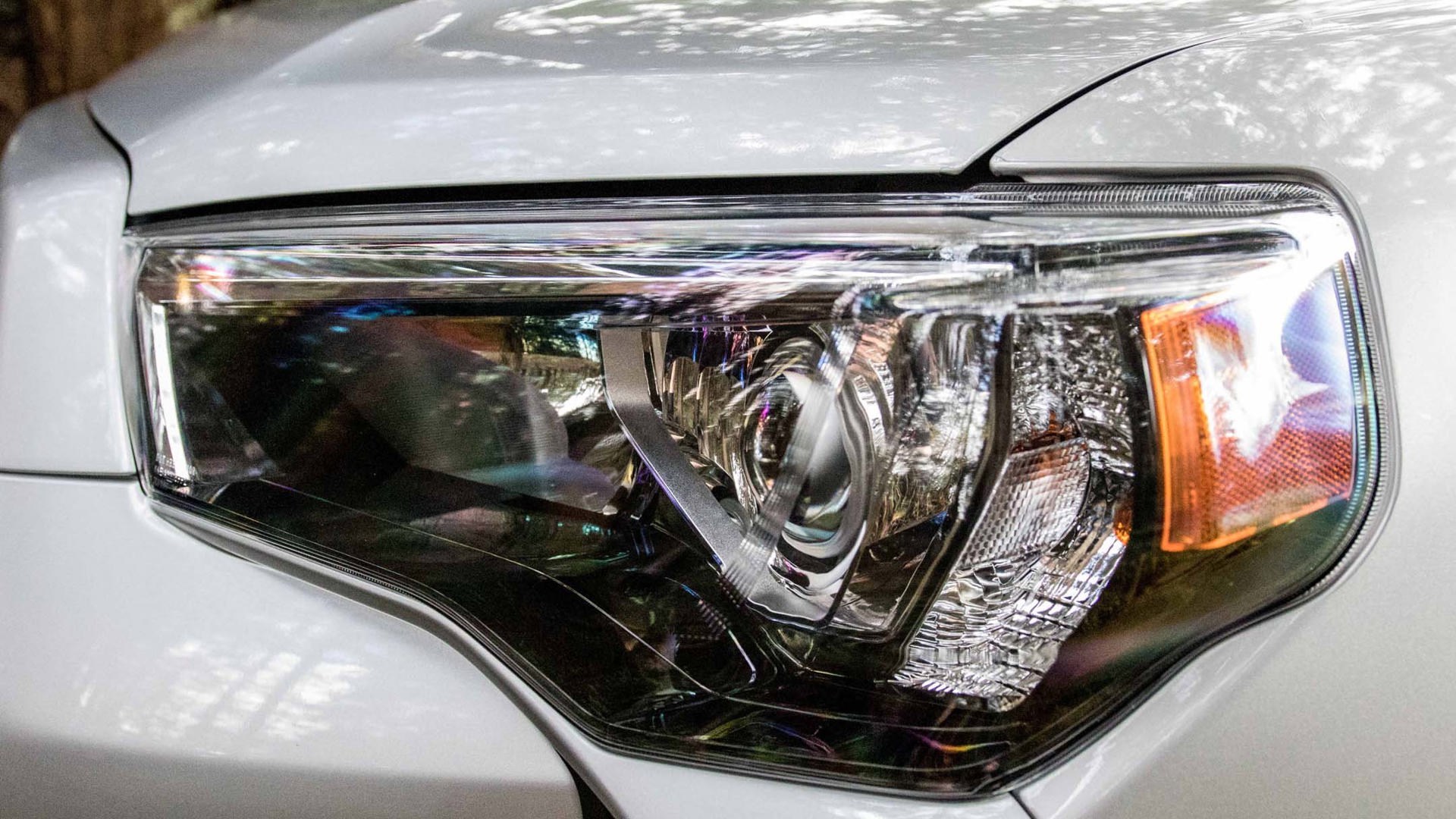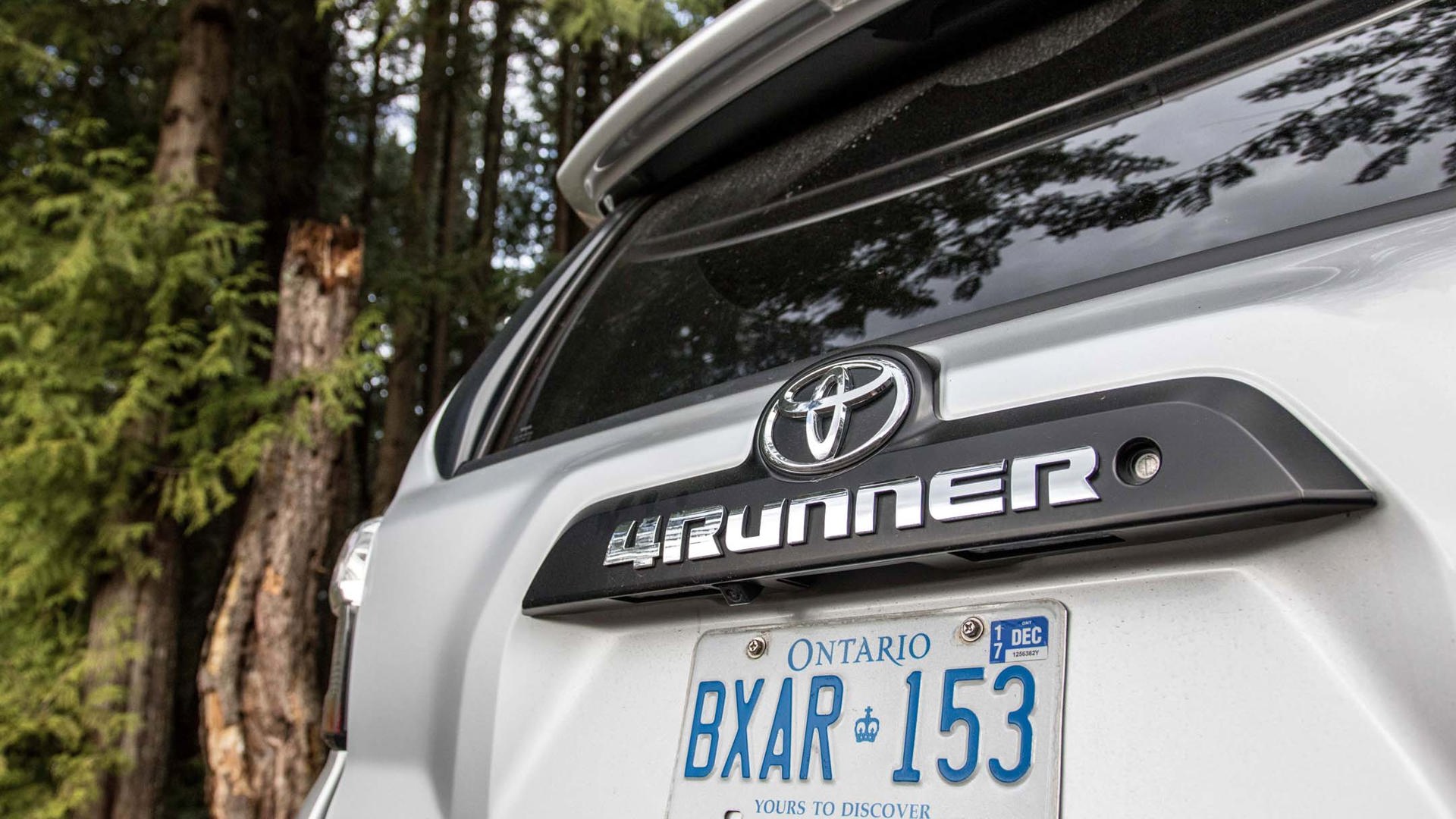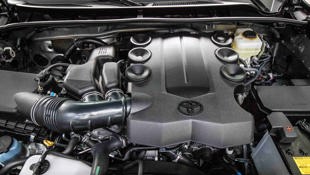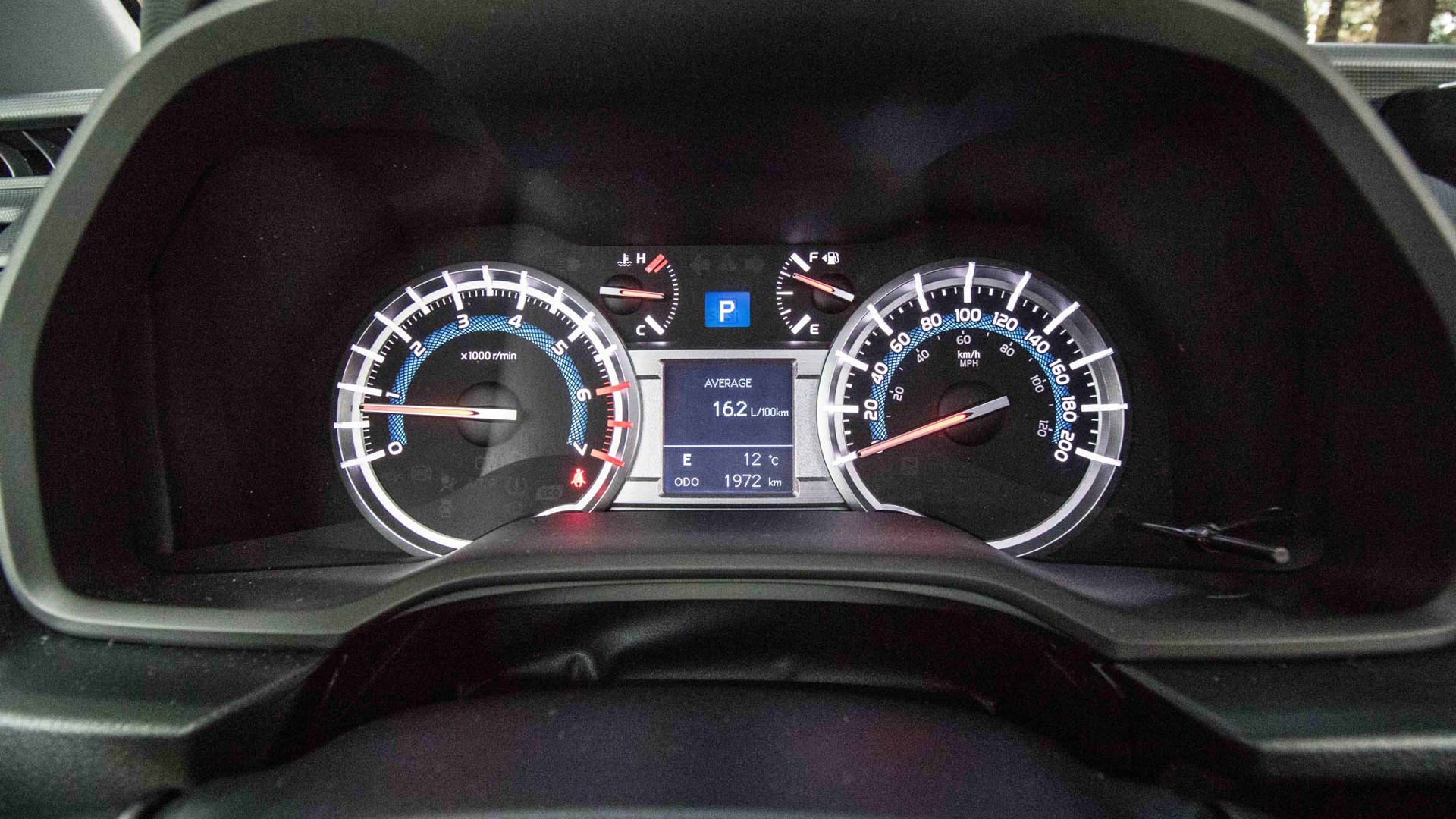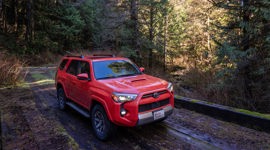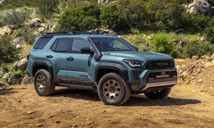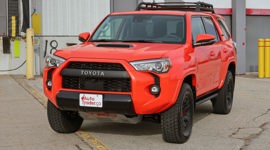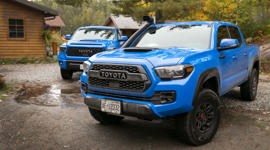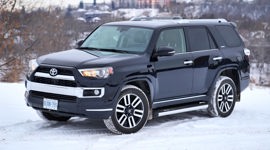 AutoTrader SCORE
AutoTrader SCORE
-
STYLING7/10
-
Safety7/10
-
PRACTICALITY6/10
-
USER-FRIENDLINESS8/10
-
FEATURES7/10
-
POWER6/10
-
COMFORT7/10
-
DRIVING FEEL6/10
-
FUEL ECONOMY5/10
-
VALUE7/10
In the mountains north of Vancouver, the mountain bike and the Toyota Tacoma are king. On any given Sunday, you can see all sorts of scabby-shinned dudes and dudettes hang twenty grand worth of downhill bikes off the tailgate of a ten-grand truck, and head up to the hills for some shredding action.
“Me truck,” it says, “Me go get dirty.”
But what about those of us who prefer our limbs intact?
The massive trail network blanketing the north shore isn’t only used by daredevils with extensive X-ray collections. More and more, runners are starting to head out in the woods, covering long distances that go up and down valleys and hills. Sometimes they use the same trails as the mountain bikers, but everybody seems to get along – the Canadian outdoors are big enough for everyone.
Your author is a semi-reluctant participant in this sport. To avoid looking like a milk-bag with pipe cleaners stuck into it, a little time sweating away from the keyboard chair is good for the body. It’s probably good for the soul as well, and nearly makes up for all that delicious craft beer I’m quaffing.
All of which brings us, in a roundabout way, to one of the last true body-on-frame SUVs on the market: the Toyota 4Runner. Compared to the Tacoma, it’s a somewhat niche proposition, being outsold by the Taco, the Highlander, the RAV4, and even the Tundra. It’s an aging platform, and it’s quite expensive, starting at $44,800, and running to $48,600 for this lightly optioned TRD Off Road version.
However, the 4Runner has a few things going for it, especially as a family vehicle for active people. It’s a well-recognized nameplate with decades of history, it’s fairly well equipped and uncomplicated as standard, and, like the Tacoma, it enjoys an almost nonsensically strong resale value.
Let’s begin with a cursory glance at the 4Runner’s styling, such as it is. I’m not entirely convinced by the front end, which gives the truck the look of a helmet belonging to some minor Star Wars character, but the rest is pleasingly square and unaffected. There’s a Limited Trim available with 20-inch alloys, but why would you bother? The 17-inch alloys found here allow for a satisfyingly meaty sidewall, and the blacked-out options for the TRD Pro are even better.
But the most likeable thing about the 4Runner is how trucky it looks. “Me truck,” it says, “Me go get dirty.” A suggestion to Toyota: offer this thing in some of the colours you used to be able to get with the FJ Cruiser. Have you ever been in an outdoor clothing store? Never mind sports cars, the future of real colours in the automotive market could start with off-roaders.
Not to knock the 2017 Highlander unduly, as it is a perfectly swank kid-hauler, but most crossovers are just people’s way of avoiding buying a minivan. The 4Runner is something else. It’s basically a four-door Jeep Wrangler for people who don’t trust FCA’s reliability record.
To that end, the interior is basically a Rubbermaid storage box. Things to like include big, chunky knobs for controlling the HVAC, standard navigation, and the frustration-free Entune infotainment system. And a proper lever for engaging four-wheel drive and low range – how cool is that? The part of me that grew up driving a Land Rover with a vise-grip wrench for a shifter is endlessly pleased.
Things not to like include weird storage bins up front that look like they were designed to hold Nokia flip-phones, and a general aura of being designed when Twilight was still popular. The fifth generation of 4Runner was introduced in 2009, and while there have been minor updates over the years, this truck feels old, a throwback to a time that’s further in the past than most of us would like to think about. Rear-seat passengers get 12 volt outlets instead of USB charging points – that sort of thing.
Still, everything essential is present. There’s a 12 V and a 120 V outlet in the back for charging a cooler or what-have-you, a total luggage capacity of 1,300 L with the seats up, and plenty of space for a family of four. I also found installing child seats to be relatively easy, despite the high ride height, simply because the door openings were so large and square.
Folding the rear seats down gives the 4Runner a whopping 2,500 L of flat cargo area, which would be more than enough if you want to throw a bike in there. However, as any parent knows, once you’ve installed a child seat, you’re not going to want to take it out again, and that means the seats stay fixed in place. Here’s where the 4Runner’s thirty-year-old party trick comes in: the glass in the rear hatch can still be lowered.
It’s a unique feature, although one that comes at a cost of not having a power liftgate available at any level, even in the Limited trims. That’s probably not a deal-breaker for most outdoorsy types, especially considering what an irritant the Subaru Outback’s sloooooow power liftgate is. However, it’s just one more hint that the 4Runner wasn’t built primarily to be easy to live with.
When it comes to on-road behaviour, the 4Runner doubles down on its rough-and-tumble image. It’s far more comfortable than a Wrangler, but that’s setting the bar low enough to bruise your shins. While ride quality is acceptable with the 17-inchers, the 4Runner doesn’t come close to approaching the way the Highlander glides over the road. It’s not too noisy though, not unless you’re asking it to sprint.
Specs say the 4Runner should manage a jog up to 100 km/h in not much over seven seconds. While Toyota’s V6s feel powerful in other applications, here the 4.0L’s 270 hp and 278 lb-ft is being asked to move 2,111 kg of curb weight. As a result, it runs a lot like I do: frequently out of breath.
Just as with the Tacoma, Toyota could potentially make a killing here by offering a diesel at a nontrivial premium, perhaps only on TRD models. As it stands, the 4Runner returns a ho-hum 14.3 L/100 km city and 12.0 L/100 km highway. Real world mixed-mileage was more like 15.0 L/100 km. I wish I could burn calories like that.
Further, the 4Runner has a considerable amount of squish to the brake pedal, and a tendency to dive under braking. Cornering is also not a strong suit, but there’s an acceptable level of grip. Steering is heavy, but in a satisfying way.
On a sunny-day run, the 4Runner was probably not the most sensible way to get out to the well-marked trailhead. You could have got there just as easily in a RAV4 or – gulp – a Prius.
However, choosing to run around in the woods isn’t really a sensible choice either. It’d be just as easy to put in your time on a treadmill, while watching a show or listening to a podcast. Trail running is less about basic health maintenance, and more about a desire to get away from the technological soup of our lives, and do something real.
Most owners won’t exercise the 4Runner’s off-roading potential beyond a bit of forest service road, or creative parking at the trailhead. There’s plenty to be called on, including four-wheel crawl control, an electric locking rear differential, and roll bars that disconnect for maximum articulation. Like your North Face jacket, the 4Runner would be happy to help you survive in the wild.
But most families will probably use this truck as I did, for light duties, and they’ll be happy with it. For every way the 4Runner raises an annoyance – from the price tag, to the on-road dynamics, to the missing or dated features, to the piggish fuel economy – it also rewards by having that most rare of automotive virtues: honesty.
To me, the 4Runner feels a lot like my four-year-old Subaru STI. Fuel economy: not great. Interior quality: not great. Value: not great. But as for the ability to put a smile on your face, those who have them, love them. Like trail running, I highly recommend it, as long as you’re okay being outside your comfort zone.
| Engine Displacement | 4.0L |
|---|---|
| Engine Cylinders | V6 |
| Peak Horsepower | 270 hp at 5,600 rpm |
| Peak Torque | 278 lb-ft at 4,400 rpm |
| Fuel Economy | 14.3/12.0/13.3 L/100 km city/hwy/cmb |
| Cargo Space | 1,300 L/2,300 L seats down |
| Model Tested | 2017 Toyota 4Runner TRD Off Road |
| Base Price | $44,800 |
| A/C Tax | $100 |
| Destination Fee | $1,760 |
| Price as Tested | $48,580 |
|
Optional Equipment
$1,920 – TRD Off Road (crawl control, terrain select, 17” alloy wheels, TRD badging, rear differential lock) $1,920
|
|

